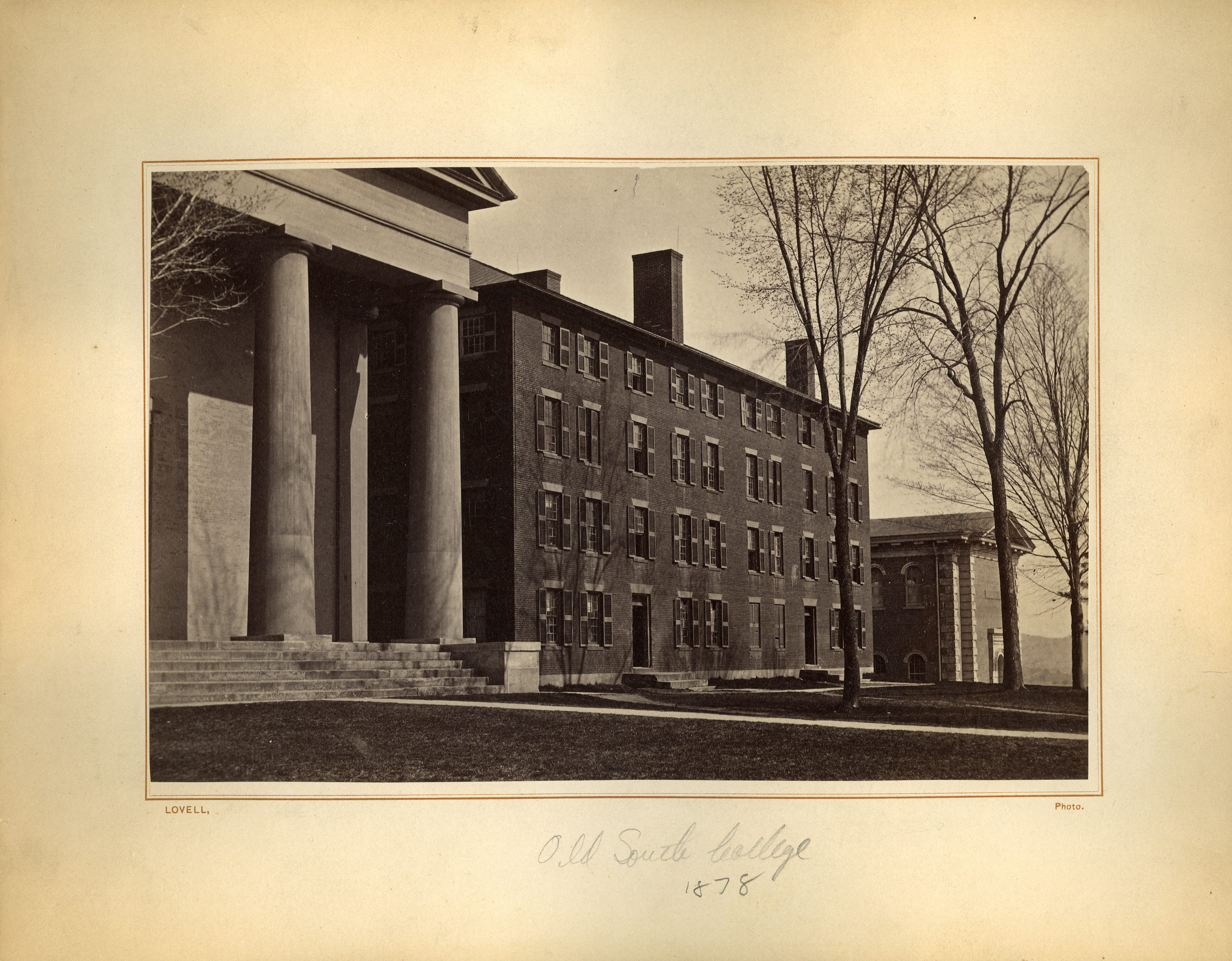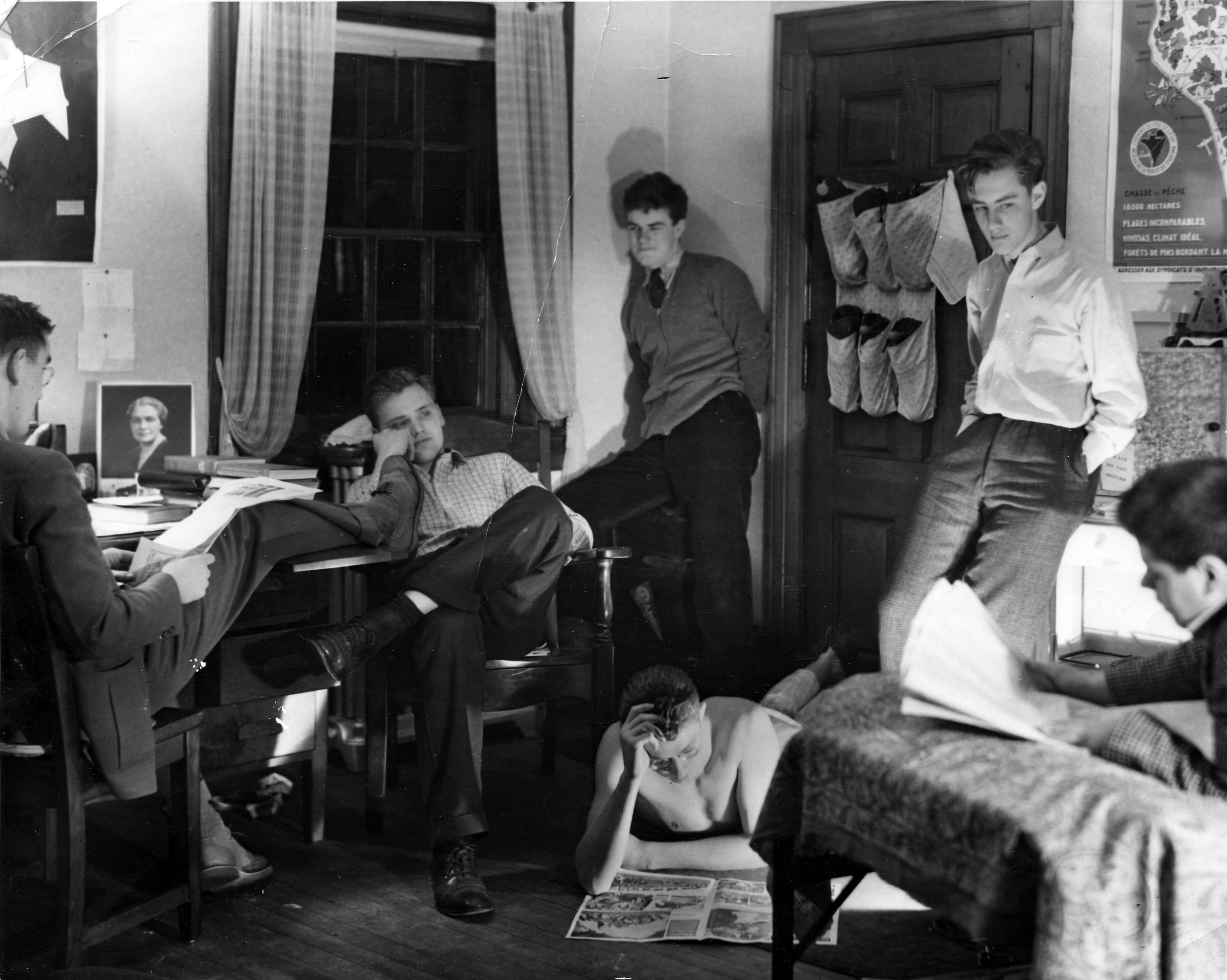There are two places on the Amherst College campus I have never been to but would give my eyeteeth to visit someday: the tower of Johnson Chapel and the 4th floor southwest corner of South College. The Johnson Chapel thing is easily explained: the building is the most iconic structure on campus, and its bell tower affords the finest views of the college and the surrounding town of Amherst. South College, its next-door neighbor, is less obvious. Aside from this dormitory being the first structure built on the campus (1820), its 4th floor, southwest corner room is said to have been the site of a number of important (or infamous) occurrences.


George Cutting’s Student Life at Amherst College (1871) informs us that in the early years of the college, the 4th floor, southwest corner room of South (officially, no. 30, South College) earned the name “Ultima Thule.” I had to look that phrase up. “Ultima Thule” generally refers to any furthermost place, the remotest possible location; in medieval maps, it often referred to Greenland or any other quasi-mystical place that lay beyond the boundaries of any map. Therefore, on the Amherst campus, “Ultima Thule” was an out-of-the-way, forbidding place — a place desired by many but possessed by few. It is possible to imagine that at one time, 30 South College fit that description. (I often wonder how the current inhabitants of that room feel about it.)

What went on in “Ultima Thule” that made it so mysterious and forbidding? According to Cutting, it was where one of the earliest and most ambitious student publications was founded, the literary monthly Horae Collegianae (1837). It was here that the editors (all exclusively members of the senior class) had their office, and where they held their vaunted symposia. It was also in this same room that another notable student magazine, the Indicator, was founded in 1848. (The Indicator continues to the present day.)

So “Ultima Thule” was a place for the elite to meet. The room also served at other times as a place for student recitations and regular meetings of various student societies — and it was said to have been the birthplace of at least one fraternity.
The mystique of “Ultima Thule” is further enhanced by the notorious Squirt-Gun Riot of October 6, 1858. That squirt-guns even existed as early as 1858 was interesting to me (I am clearly a neophyte in the history of squirt-gun warfare). Cutting, again in Student Life at Amherst College, recounts the incident, from which I will quote passages:
The class of ’61 had magnanimously determined to abandon the practice of hazing the Freshmen, and, in token of their good will, proposed to bury the squirt-gun, the emblem or instrument of warfare upon the lower class. Imposing ceremonies had been arranged, with all the paraphernalia of a funeral, a solemn procession, a funeral oration and dirge, and music by a tin band. The corpse was properly laid out in a genuine coffin, and deposited for safety in ‘Ultima Thule,’…
The “riot” consisted of a battle between the Sophomore class of 1861 and the Junior class of 1860. Apparently the ’61 boys had stolen the squirt-gun from the ’60s the year before, and as it was property which the ’60s had paid dearly for (and was a fine specimen in any case, “large and powerful […], and capable of drenching a Freshman at one fell squirt”), the Juniors were not cool with their younger class presuming to prepare a burial ceremony for it. While the Sophomores were away at dinner, just one student was left behind to guard the squirt-gun, which was kept in “Ultima Thule.”
[…] South College, south entry was found to be thronged with Juniors in the greatest state of phrenzy. A few of the Sophomores succeeded in reaching the upper entry, by passing over through the attic from the north entry, and found the panels of the doors of ‘Ultima Thule’ broken in, and the plastering cut through from the attic above. But the Juniors were at bay, for the guardsman stood calmly with pistol in hand, eyeing both the gap in the door and that, overhead. The few Sophomores who had reached the spot succeeded in getting around the door or into the room, and, by dint of hard work, kept the Juniors back till their classmates began to come up the stairs in force. The Juniors chopped down the attic stairs in the early part of the fray, and armed themselves with the pieces, but the Sophomores, with an esprit de corps which the Juniors had outgrown, steadily fought their way up the stairs, wresting the clubs from their antagonists, and dragging them by the legs down the stairs.
Just as the Sophomores had reclaimed their territory and rebuffed the attackers, who should burst in on the scene but President William Stearns. He ordered the Juniors to leave the building and restored order. There were many injuries, and South College (“Ultima Thule” in particular) received a lot of damage. The president, fully supportive of the Sophomores’ vow to give up hazing (at least with a squirt-gun?), allowed the burial ceremony to proceed as only it could in classic mid-19th century college fashion:
Lemonade and the pipe of peace passed freely round, and an oration and poem, and several songs, made up a part of the festivities. The distinguished corpse was buried between South and East College, near the carriageway, and the bier stood over the grave unmolested for weeks.
One wonders if the object of contention is still buried somewhere on the quad. This would have to be somewhere between present-day South College and Stearns Hall…

The history of student dormitory rooms, as well as the very interesting history of 19th-century mock-burial ceremonies (this one involving the squirt-gun was by no means unusual) are subjects I will have to take up in future blog posts.

One thought on ““Ultima Thule” and the Squirt Gun Riot of 1858”